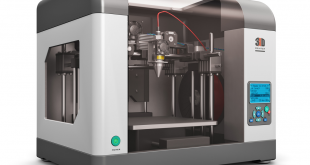When your MacBook Pro won’t turn on, it makes it hard to get anything done. Let’s face it, no one likes it when their laptop bites the dust. But before you start shopping for another computer, consider that the problem may not be as dire as you think. There are a few tricks to try before you decide all is lost.
What could possibly be the reason your MacBook Pro won’t turn on, and what are ways you can troubleshoot at home before sounding the alarm and heading to the Apple store? Macs are reliable and well-built machines but are still susceptible to problems. Hopefully, some of the information below will help you get your MacBook Pro turned on.
Reasons Why Your MacBook Pro Won’t Turn On
Before you know what steps to take when your MacBook Pro won’t turn on you, need to know what’s causing the problem. Below are a few reasons your MacBook Pro won’t turn on.
Power supply
Sure, it’s cliche, but the problem could be something as simple as your power supply. The first thing you want to do is make sure the charger is securely plugged in. If it wasn’t, give it a while to charge before you decide that the problem isn’t with the charger.
If you determine that the problem is with your power supply, try a different one. You could also borrow the charger of a friend with a MacBook Pro to see if that solves the problem. If it does, then you can always find a secondhand power supply. Just make sure Apple made it, so you don’t run into the same problem in the future.
Monitor settings
Another problem you could have is that your MacBook Pro is booting up, but the display is not working correctly. Listen for any noises when you turn on your MacBook Pro. If you hear the typical bootup chimes, then you know the problem is that it can’t access the display.
The second possibility is that the screen brightness has been turned down so low that you can’t tell the MacBook is on. Find the corresponding function button and turn up the brightness until you can see the display. If that doesn’t fix the problem then you know it might be an issue with the display hardware.
Hardware issues
Your problem could lie somewhere within the hardware of your MacBook Pro. There are a few processes you can follow that might help bring your laptop back, which we’ll discuss further in the following troubleshooting section.
Troubleshooting At Home
Before turning to the professionals at the Apple store, there are some options available that might help when your MacBook Pro won’t turn on. Give some of these a try and see if they fix your problem.
Power cycle
The stock answer from IT support around the world is,”Did you turn it off and back on?” But this is one method that might work. This power cycle takes about twenty seconds and requires a few more steps than a typical power cycle.
First, unplug the battery, and hold down the power button for about ten seconds. While holding down the power button, plug in your power cord and hold it for another ten seconds. Release the power button and press it once, just like you might do when turning on your MacBook Pro.
If you’re lucky, your MacBook Pro will boot up, show your loading screen and play the familiar Apple chime.
Reset your SMC
Your MacBook Pro has a System Management Controller (SMC) that controls its display, power, light, fan, and other hardware components. After you perform your power cycle, resetting your SMC should be the first thing you try.
To reset your SMC, the first thing you want to do is make sure your MacBook Pro is shut down. Sure, this sounds like a ridiculous step if your MacBook Pro won’t turn on, but better to be safe than sorry. Next, plug in your power adapter and make sure it is securely connected to your MacBook.
On your keyboard, press the control+shift+option keys at the same time you press the power button. Release all the keys at the same time, then press the power button on the computer. Just like with the power cycle, if it works, you’ll see the loading screen and hear the Apple chime as your MacBook Pro boots up.
Boot in safe mode
Booting into safe mode is ideal because it limits what functionality is available on your MacBook Pro during startup. The computer performs a check on specific diagnostics which gives it a better understanding of what may or may not be causing the problem. It doesn’t happen often, but once in a while, you can get your MacBook Pro to start up in safe mode, then restart and have everything return to normal.
To boot up in safe mode, make sure your MacBook Pro is shut down, then hold the shift key and press the power button. Bear in mind that safe boot can take some time.
Reset NVRAM
On today’s more modern MacBooks, when you shut off your computer, there is a special memory that stores data. This data, such as screen resolution and volume settings, persists after you power down your MacBook Pro. Resetting the data won’t hurt your computer, so let’s give it a shot.
There are a lot of keys to hold down for this reset, so if you have six fingers on one hand, now’s the time to put them to use. Press down Command, P, R, and Alt, then power on your MacBook Pro. Keep the keys held down until you hear the sound of your computer restart. Let it reboot a second time, then let go of the keys.
Results vary on this step. Sometimes you’ll get a normal restart, and your MacBook will be good to go. Others, a progress bar may show up and then the computer will start up. Worse case scenario, you’ll see the progress bar and your MacBook Pro will shut down about the halfway point.
Use disk utility while in recovery mode
Disk utility is ideal if your MacBook is booting, but you can’t get the operating system to load. If this is the case, there’s a good chance your drive is corrupted. Boot into recovery mode and run the disk utility. Like the other troubleshooting suggestions on this list, be sure your MacBook Pro is completely off before you get too far into this process.
Next, press and hold the R and command keys, then press the power button to turn your MacBook Pro on. Keep holding R and command as your computer boots up. After you’ve booted into recovery mode, you’ll have access to the disk utility. Click o the disk utility icon, then find the icon for your Mac’s drive. Once that’s done, click verify disk to continue.
If you have errors or your disk is corrupt, the disk utility tool should help you find them. Your MacBook Pro will ask if you want to repair the errors. If you want to fix them, click repair disk. While you’re in recovery mode, you can also restore your MacBook Pro to a previous time using the time machine backup tool.
Additionally, you can check and validate your internet connection, search for resolutions using your Safari web browser, check on the status of connected drives, and install your macOS.
Reinstall macOS
As mentioned, you can reinstall macOS while you’re in recovery mode. Once you boot into recovery mode, just select to install the latest OS, then follow the prompts that show up on the screen.
Make an appointment with the Apple store
If you’ve tried everything else on the list, and your MacBook Pro won’t turn on, then it might be time to bite the bullet and take your laptop to the Apple store. Make an appointment with someone and take it in to determine whether or not they can help you fix your MacBook Pro.
If your laptop is under warranty, the Apple store can help you with that as well. The nice thing is that if nothing can be done, at least you’re already in the right place to get a new one.
If All Else Fails
Hopefully one of the above recommendations fixed the problem of your MacBook Pro not turning on. Remember, there are plenty of reasons why your laptop may not come on, and if you have time, there are a few more possible fixes you could explore. However, if none of these resolved the issue, then it might be time to throw in the towel and head to the computer store for a new MacBook Pro.
Featured Image CC by 2.0, by Maurizio Pesce, via Flickr
 White summary Magazine
White summary Magazine






